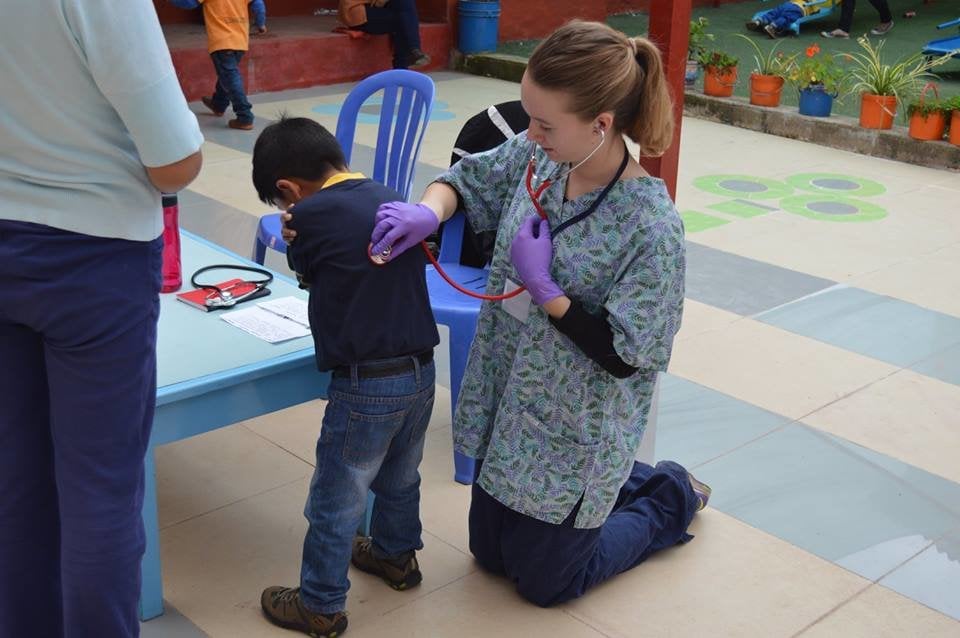How to Lower Your Carbon Footprint Through Sustainable Travel
Read on for tips on sustainable travel to learn how to lower your carbon footprint while living overseas.

While climate change has been a pressing issue for quite some time, this past year has seen a particularly grave increase in the number of climate-related catastrophes that have dominated global news headlines. From sweltering heatwaves across Europe and deadly fires throughout New Zealand, Spain, and California to record-breaking storms throughout Florida, Central America and the Caribbean and melting ice caps in Antarctica and the Arctic, recent news about the effects of climate change have been very bleak.
As somber headlines about climate change flood the news, it can feel more and more hopeless that true change will ever happen. While much may be seemingly out of control, there is one important step all of us as individuals can take to do our small part to benefit the globe -- lower our carbon footprint.
What is a "Carbon Footprint" and Do I Have One?
Carbon footprint may seem like a buzzy phrase, but what is it exactly? If everyone has one, we should all know what it means.
The dictionary defines carbon footprint as "the amount of carbon dioxide and other carbon compounds emitted due to the consumption of fossil fuels by a particular person or group." In short, it is the number of bad toxins each individual is responsible for putting into the environment.
Many modern human activities, such as driving a car, heating your apartment or even the use of plastic bags and bottles require the production of greenhouse gases. Cars burn fuel, heating an apartment burns oil gas or goal, and plastic is produced in factories. These energies all emit carbon dioxide into our atmosphere and this carbon dioxide heats up the planet.
Traveling can present you with the opportunity to make changes to your daily habits and routine that will have a positive impact on the planet. Read on for tips on sustainable travel to learn how to lower your carbon footprint while living overseas.
Walk More

Photo by: Yasmin S., IVHQ Indonesia
If you are living in a major city or small town where distances between your home and school or job are not too great, consider walking to your destination instead of taking transportation such as a taxi or personal vehicle. When you walk you do not emit any carbon dioxide into the atmosphere. As such, walking would always be the ideal form of transportation. Fortunately, walking is the way of life for people in many places of the world so you may find it easier to integrate walking into your daily routine overseas than you would in the United States.
Not only will walking help the environment, it will also help you be a healthier individual. For every mile you walk, expect to burn around 100 calories. Brisk walking on a regular basis has also shown to boost the mood and help get creative juices flowing.
Take Public Transportation
When walking is not possible, take local transportation. While nearly all cars and vehicles do emit carbon dioxide, the fewer vehicles on the roads the better and public transportation produces less gas and pollution than private vehicles.
Similar to walking, you may find that your new host country or city has a better public transportation system than you are used to back home. In many parts of the world buses or metros are a prevalent form of transportation and you will be able to get everywhere you need to go without ever stepping into a private vehicle. Taking public transportation will also allow you to live a more authentic version of life abroad as you follow in the footsteps of locals and do as they do.
Re-Use Plastic Bags & Water Bottles

Photo by: Chris S., The Intern Group Australia
The production of plastic contributes heavily to the amount of carbon dioxide emitted into the atmosphere each year. Common culprits of plastic include water bottles and grocery bags. In fact, the production of 5 plastic bags and 2 plastic bottles both produce 1 kilogram of carbon dioxide each. When you think of all the plastic bags and bottles in the world and do the math, this number becomes shockingly high.
Instead of buying a new plastic water bottle every time you need one, invest in a solid reusable bottle that you can refill with tap water. If you are traveling to a destination where it is not safe to drink the tap water, you can still use your reusable water bottle. Simply buy a large jug of water at a grocery store and use this to refill instead of buying new plastic water bottles every time.
The same goes for plastic bags. Bring reusable bags with you to the store instead of purchasing new ones every time. When you travel it can be a good rule of thumb to bring extra bags along just in case you need one should you purchase additional souvenirs or an existing bag you use breaks.
Eat Local
The United States Environmental Protection Agency estimates that 13 percent of greenhouse gas emissions in the United States result from food production. With that said, it is important to make educated decisions about food both at home and overseas.
The best way to lower greenhouse gas emissions with food is to eat locally-produced and organic food. Fruit and vegetables grown in the region you are living in will have required less transportation to reach your plate, resulting in lower gas emissions. Shop as local as you can and consider visiting farmers markets and local shops to buy your produce instead of larger chain grocery stores. This will have the added benefit of helping local farmers and vendors instead of a big corporation, and again you will be more integrated into local life overseas.
Additionally, it can be a good rule of thumb to avoid beef and dairy products. A large amount of land is needed to produce beef, and each year thousands of acres of rainforest in places like Brazil are cleared to make space for beef and dairy production.
Get Involved & Give Back

Photo by: Val C., Local Volunteer Projects Peru
Living overseas provides you with the wonderful opportunity to get involved in local organizations that support climate change. Attend a local march, volunteer with a non-profit or start a movement to reduce plastic in your new neighborhood. Not only will doing so help the planet, it can also be a great gateway for you to make friends and have a deeper, more meaningful experience overseas.
If you are looking to get involved, Climate Store has a great shortlist of climate related organizations to get involved with across the globe. Check out local newspapers and ask your landlord, teachers or colleagues for their recommendations on how to be involved.
While you are overseas learn as much as you can about climate change from your host country’s perspective. Many countries are doing a much more effective job of combatting climate change than the United States is. For example, Denmark, Hungary, the United Kingdom and Ukraine have all recently managed to reduce their carbon dioxide emissions by more than 20 percent.
Take advantage of your experience to soak as much knowledge up as you can. Bring back your new ideas and enthusiasm with you when you return home. You never know how you will be able to use the knowledge you’ve gleaned ove
